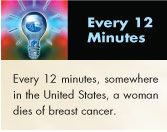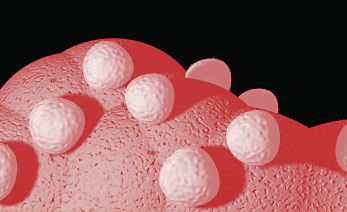Peptide-Based Breast Ca Vaccines Promising in Early Trials
Investigational vaccines to prevent breast cancer recurrence are showing promise in small clinical trials
SAN ANTONIOInvestigational vaccines to prevent breast cancer recurrence are showing promise in small clinical trials, according to reports from the 29th Annual San Antonio Breast Cancer Symposium.
In a plenary presentation (abstract 4), Col. George Peoples, MD, chief of surgical oncology, Brooke Army Medical Center, Fort Sam Houston, Texas, reported preliminary results from a trial of a vaccine derived from the HER2/neu protein. The vaccine consists of the E75 peptide from the extracellular domain of HER2 mixed with GM-CSF. E75 binds to the HLA-A2 molecule, which is found in about half the population, and stimulates CD8 cells. The E75 vaccine is being developed by Apthera Inc., Scottsdale, Arizona, as NeuVax (see image on p. 1).
Previous studies of the E75 vaccine have been conducted in the metastatic setting in very small numbers of patients. In the current trial, which was largely conducted at Walter Reed Army Hospital, the vaccine was evaluated in a population of 186 women with node-positive, HER2-positive breast cancer who had no evidence of disease after multimodality treatment but had a high risk of recurrence. All patients in the active arms had the HLA-A2 allele, while control patients did not. The investigators evaluated multiple doses and schedules of the vaccine, which was given monthly for 6 months. The results represent the observations across all treatment arms combined.
Follow-up at 20 months showed that vaccinated patients had a recurrence rate of 5.7%, compared with 14.1% in the control group (P = .04). The disease-free survival was 92.5% in the vaccinated arm, compared with 77% for the control arm, Dr. Peoples reported. At 24 months, differences persisted in the armswith an almost 50% decrease in recurrence with vaccination, from a rate of 16% in the controls to 8.3% in the vaccinated patients (P < .07). However, a late recurrence in the treatment arm resulted in a loss of statistical significance, which was explained by Dr. Peoples as owing to the low event rate, where "a single patient can change the results."
The mortality rate was 4.9% in the control arm and 1% in the vaccinated arm, which was statistically similar. Recurrences in the node-negative patients were observed in 5.7% of the control arm vs 2.0% of the vaccinated arm; rates in the node-positive patients were 24% and 14.2%, respectively (no P values; not prespecified endpoints).

With or without preexisting immunity, all vaccinated patients had a rapid immunologic response until month 4, when response diminished and plateaued. It is possible that boosters should be given at this time, Dr. Peoples said. "We think with this vaccine we are boosting natural immunity, amplifying a preexisting response," he said.
There are a number of caveats to this study, he said. While it is the largest breast cancer vaccine trial ever conducted, it is nevertheless an overall small trial with a small number of events, is nonrandomized, and uses nonstandard dosing. Interestingly, the E75 arm contained twice as many ER-negative/PR-negative patients as the control arm, and few patients in the multiple-dosing strategy actually received what is now regarded as optimal dosing. These factors might bias the study against a favorable outcome in the prevention arm, Dr. Peoples said, adding that despite these factors, the results were positive. The findings portend well enough for the vaccine that a phase III study is being designed, Dr. Peoples said. He plans to also evaluate the vaccine in node-negative patients, as well as HER2-negative patients.
In a press conference, Dr. Peoples discussed the development of the E75 vaccine. "This is a very basic vaccine and much less sophisticated than other cancer vaccines that are in development," he said. "Actually, most people felt that a simple vaccine like this could not workthat we would need multiple peptides to make a 'super vaccine.'"
AE37 Vaccine
Dr. Peoples is also involved in other cancer vaccine development. He is particularly encouraged by the li-Key/HER2/neu MHC class II peptide AE37, which was described at the San Antonio meeting (poster 1122) and is entering a phase II trial. AE37, which is being developed by Antigen Express, Inc., Worcester, Massachusetts, is the first peptide vaccine derived from a tumor-associated antigen that elicits a robust immunologic response in cancer patients without the use of an immunoadjuvant, he said.
Compared to E75, Dr. Peoples commented, "AE37 is also safe and effective, and causes an even more dramatic immune system response."

On the Cover
The image on the cover shows T cells from E75-vaccinated patients attacking breast cancer. Image courtesy of Apthera Inc., Scottsdale, Arizona, which is developing the E75 vaccine as NeuVax.
Gedatolisib Combo With/Without Palbociclib May Be New SOC in PIK3CA Wild-Type Breast Cancer
December 21st 2025“VIKTORIA-1 is the first study to demonstrate a statistically significant and clinically meaningful improvement in PFS with PAM inhibition in patients with PIK3CA wild-type disease, all of whom received prior CDK4/6 inhibition,” said Barbara Pistilli, MD.